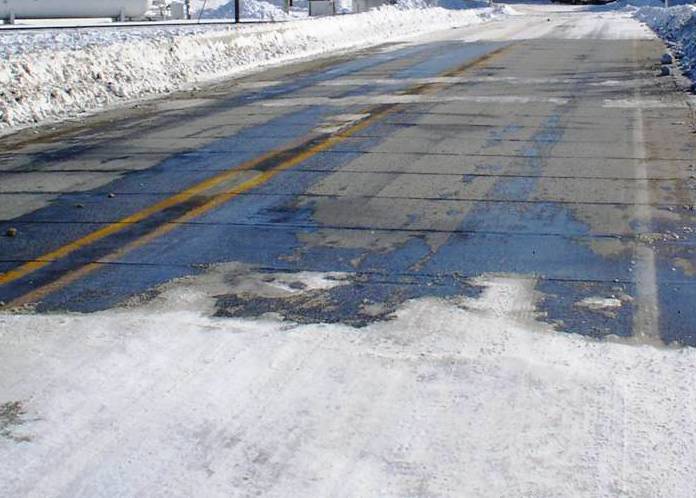
![]()
Yes. You read that right, electricity conducting concrete. Researchers at our very own University of Nebraska-Lincoln have been working on creating a new type of concrete that is able to conduct just enough electricity to melt snow and ice safely. This new formula resembles the formula for regular concrete, but has been adjusted to contain 20% steel shavings and carbon particles. When combined with a power source the added components make the concrete rise in temperature just enough to melt accumulated ice and snow, but still allows the concrete to be safe to touch. The amount of power needed to do this is about as much power generated from a household outlet.
Chris Tuan, a civil engineer professor from the University of Nebraska-Lincoln, suggests that this material is not ideal for building entire streets and roadways. Instead, he suggests using it for specific locations that are prone to potholes or where ice collects. Some other possibilities where it could prove cost effective for use are on bridges, highway exit ramps, and intersections.
According to a recent press release, the research team was in a testing phase through March of 2016. They were demonstrating the defrosting performance of the concrete to the Federal Aviation Administration. Tuan revealed that the administration is happy with the results they will look at the possibility of scaling up the testing by installing the new concrete into a tarmac of a major U.S. airport.
The conductive concrete could be used to keep tarmacs clear of snow and ice for service vehicles such as trash removal, food and fuel delivery, and luggage carrier vehicles. The FAA is more interested in using it for the aforementioned purposes rather than for the runways themselves. The reasoning is to keep the service vehicles moving to reduce the amount of weather-related delays at the airport.
The conductive concrete has already been used in a bridge in Lincoln Nebraska. The bridge is not far from the university. Over ten years ago the Nebraska Department of Roads and Tuan collaborated to install 52 slabs of the conductive concrete, making it the first bridge in the world to be built with the material. It costs about $250 to defrost the bridge during a multiple day storm, which is less than the cost of equipment and materials that are usually required for the same outcome. Additionally, the bridge has fewer potholes due to not having salt and chemicals applied to it.
The concrete doesn’t come cheap however, costing about $300 per cubic yard opposed to regular concrete costing about $120 per cubic yard. Over time however, the concrete could prove to be very cost effective saving money on snow removal and maintenance.
How nice would it be to have a conductive concrete driveway and to never have to shovel again?! It will be exciting to watch for this technology to expand in the coming years.
